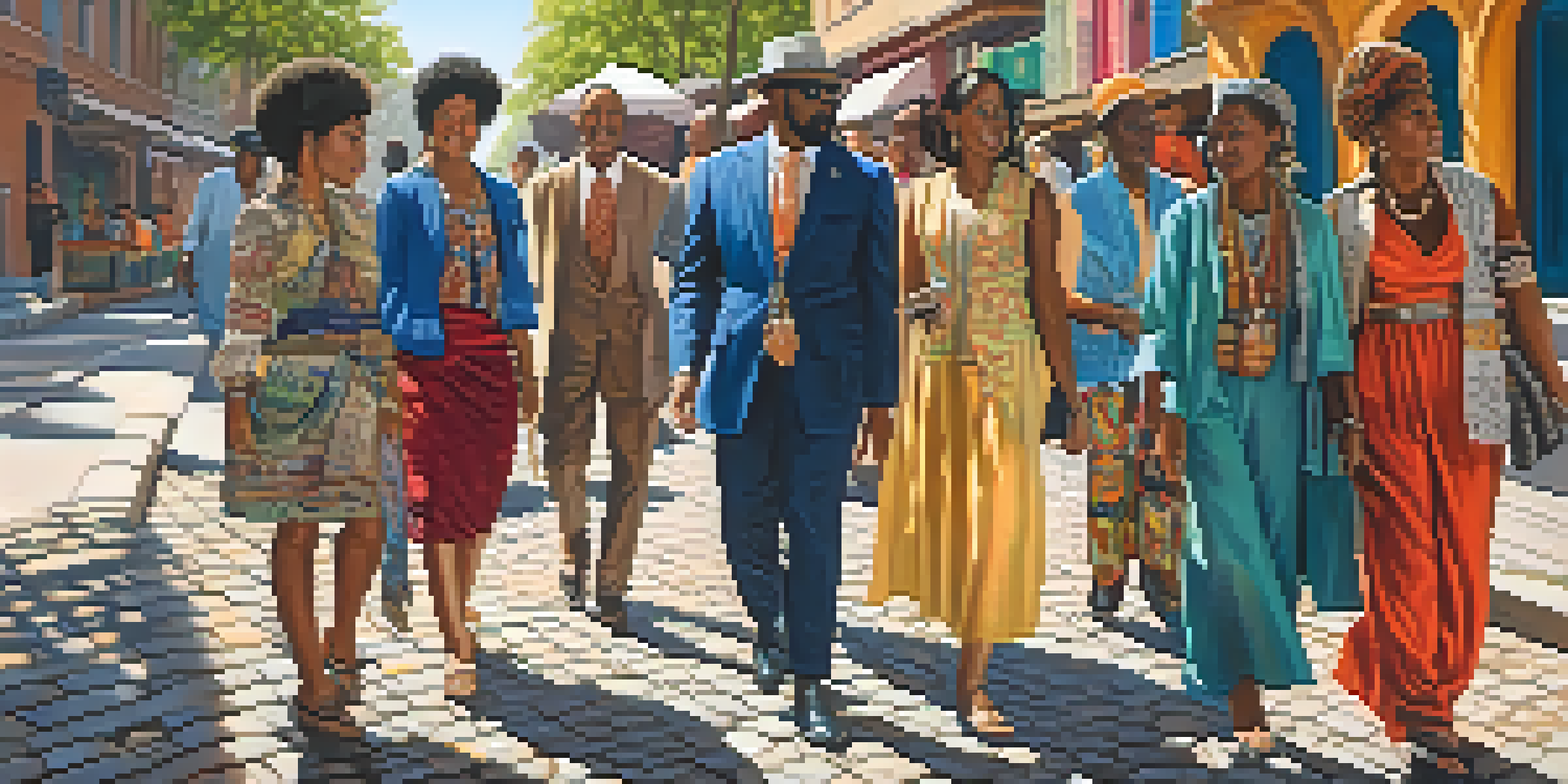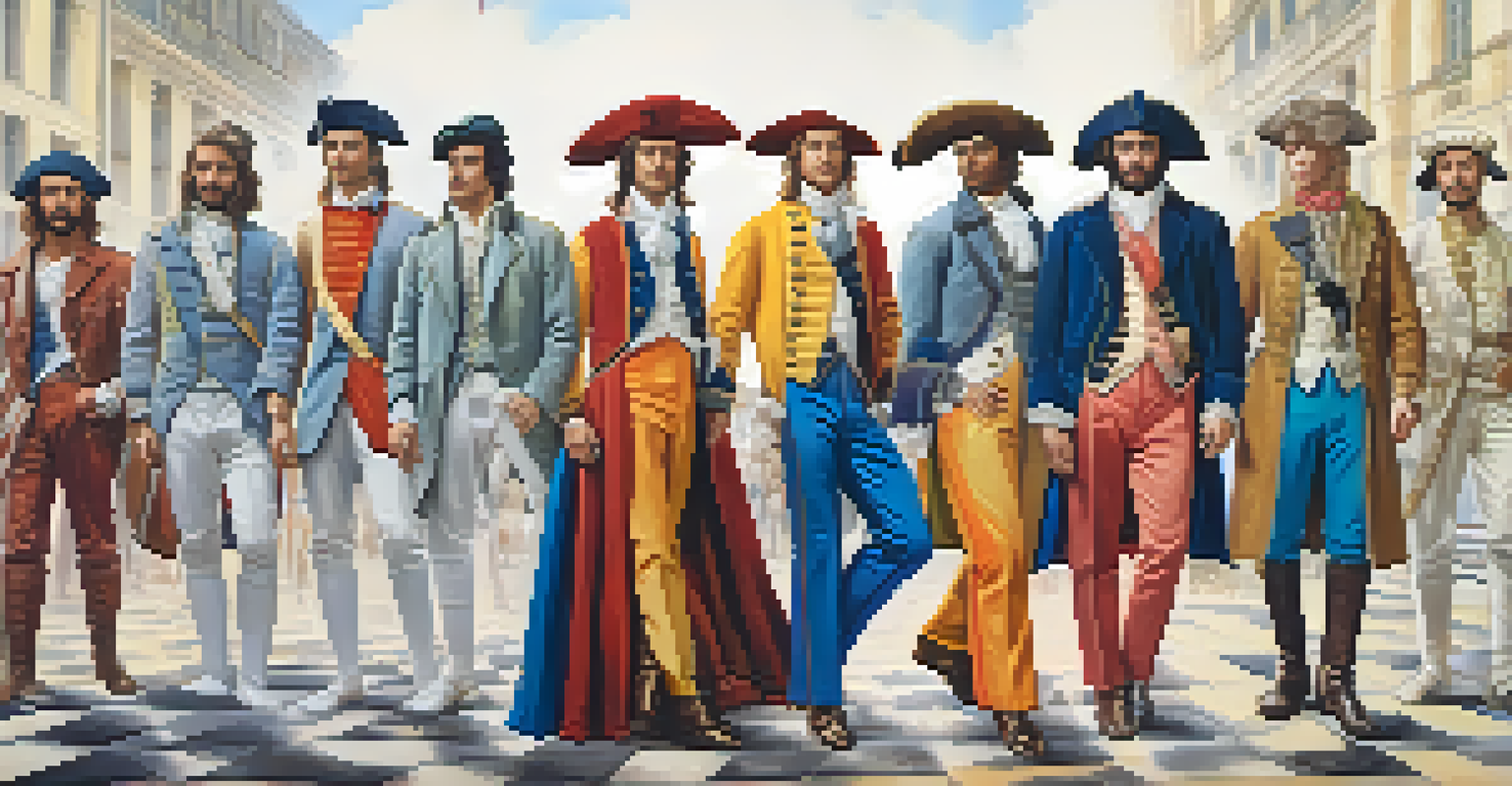How Clothing Choices Reflect Political Ideologies and Beliefs

Clothing as a Form of Expression: The Basics
Clothing is more than just fabric; it’s a canvas for self-expression. From the t-shirts we wear to the shoes on our feet, our clothing choices can convey a wealth of information about who we are and what we believe.
Fashion is the armor to survive the reality of everyday life.
For instance, when someone wears a shirt emblazoned with a political slogan, they are not just making a fashion statement; they are signaling their values and affiliations. This form of non-verbal communication can be powerful, influencing how we perceive each other in social and political contexts.
Understanding this dynamic can help us appreciate how clothing serves as a reflection of our personal ideologies and the broader cultural landscape.
Historical Context: Fashion and Politics Through the Ages
Throughout history, clothing has been intertwined with political movements. Take the French Revolution, for example, where the sans-culottes rejected aristocratic styles to showcase their revolutionary ideals.

Similarly, in the 1960s, the counterculture movement embraced tie-dye and bell-bottoms as symbols of rebellion against the establishment. These clothing choices were not just trends; they were deliberate acts of defiance and political statements.
Clothing as Self-Expression
Our clothing choices serve as a canvas for self-expression, conveying personal values and beliefs.
By examining these historical examples, we can see how clothing has played a crucial role in shaping and reflecting political ideologies.
Modern-Day Fashion Statements: Social Media and Activism
In today’s digital age, social media has transformed how we express our political beliefs through fashion. Platforms like Instagram and TikTok allow users to showcase outfits that align with specific causes, from climate change to social justice.
Clothes mean nothing until someone lives in them.
For example, the use of eco-friendly brands or clothing made from sustainable materials can signify a commitment to environmental activism. This is not just about looking good; it’s about making a statement that resonates with followers and encourages collective action.
As a result, fashion has become a powerful tool for activism, bridging the gap between personal identity and societal issues.
Branding and Political Ideologies: Aligning with Values
Many clothing brands today are openly aligned with specific political ideologies, which can influence consumer choices. Brands like Patagonia champion environmental causes, while others may support social justice initiatives.
When consumers choose these brands, they often do so to align their purchases with their values. This creates a community of individuals who not only share similar beliefs but also support one another through their fashion choices.
Fashion and Political Movements
Throughout history, fashion has been intertwined with political movements, reflecting and shaping ideologies.
This trend highlights the importance of brand identity in the modern marketplace, as companies increasingly reflect the values of their customer base.
Fashion Trends: Reflecting and Shaping Political Movements
Fashion trends can both reflect and shape political movements. For instance, the rise of the 'power suit' in the 1980s represented women's growing presence in the workforce and their fight for equality.
Conversely, the popularity of athleisure in recent years has coincided with a more casual approach to politics and activism, promoting comfort alongside a message. This evolving relationship between fashion and social consciousness illustrates how trends can serve as a response to the political climate.
Thus, fashion is not static; it actively participates in the dialogue surrounding political ideologies.
The Role of Subcultures: Unique Fashion Statements
Subcultures often emerge as distinct groups with their own fashion styles, which can serve as a reflection of their underlying beliefs. For example, punk fashion, characterized by leather jackets and graphic tees, emerged as a rebellion against mainstream culture.
These unique styles often carry deep-rooted political messages, challenging societal norms and expectations. The use of safety pins and bold colors can symbolize resistance and a desire for change.
Sustainability in Modern Fashion
The future of fashion is increasingly linked to sustainability and political consciousness, influencing consumer choices.
By studying these subcultures, we can gain insight into the ways fashion can foster community and provide a voice for marginalized groups.
The Future of Fashion: Sustainability and Political Consciousness
Looking ahead, the future of fashion is increasingly tied to sustainability and political consciousness. With growing awareness of issues like climate change and ethical labor practices, consumers are becoming more discerning about their clothing choices.
This shift indicates a desire for clothing that not only looks good but also aligns with personal and political beliefs. Brands that prioritize transparency and responsibility are likely to thrive in this new landscape.

As we navigate the future, it’s clear that our clothing choices will continue to reflect our ideologies, shaping the world of fashion in profound ways.